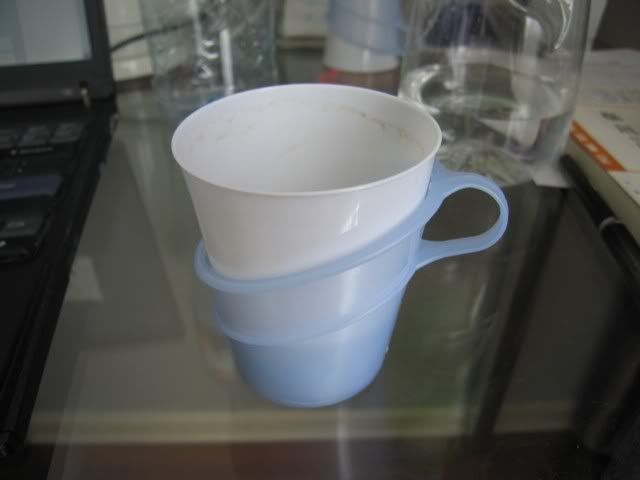These days, wherever you go in China, as long as the hotel is semi-decent it is bound to come with a water boiler, of the cheap plastic kind. This one I’m staying at is no exception. Except, the hotel is fairly new and the water boiler still smells a bit like plastic. Also, they don’t have real glasses here. Instead, I get this:

The white cup is detachable from the base — in fact, it’s just a regular plastic cup slipped into a handle of some sort. It’s not very elegant, nor ideal for tea sipping, but since I wanted to travel light and not carry around a big load of teaware, this will have to do. The stains are from the previous tea that’s still in the cup.
I only took two teas with me on this trip – the Assam that Mr. Lochan gave me, and a Lapsang Souchong. I tried both in the plastic cup by now, and I must say I like the Lapsang Souchong better. It’s got a nice sweet aftertaste and mellows out evenly as infusions go on, whereas drinking the Assam, I really feel the lack of milk was making the tea less enjoyable than it could be. The tea is more bitter, and doesn’t quite turn sweet in later infusions the way the LS does. I think this has much to do with the intended market for such teas, and the preferences of the target audience. A tea like LS will not sell well in China if it doesn’t turn sweet, whereas the way this LS is is probably a touch too light to go with milk.
I think this might also account for the way the Indian Oolongs behave. They brew a bright, strong introduction, but then fades fairly quickly as infusions go on. I think they’re probably just not meant to be drunk that way at all, and drinking it Chinese style is probably not “getting” the tea. Perhaps if stuck in a big porcelain teapot, with some scones on the side, they will beat any Chinese oolong brewed the same way.

 RSS - Posts
RSS - Posts
I took you at your suggestion and have been reading some of your old post-Covid posts. I haven’t been to…